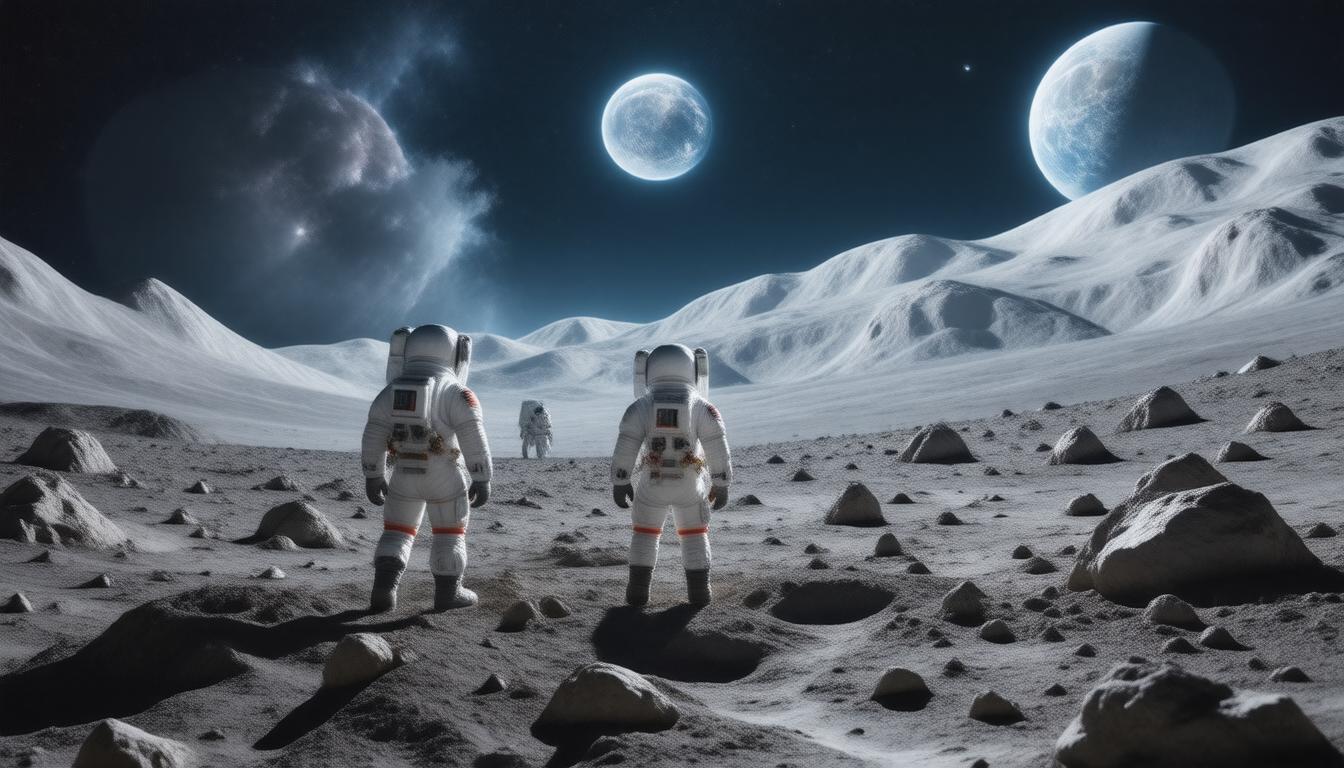Lunar exploration has captivated human imagination for centuries, but it wasn’t until the advent of the space age in the mid-20th century that significant strides were made in understanding our celestial neighbor. From early telescopic observations to sophisticated robotic and crewed missions, the journey to uncover the secrets of the Moon has been an ongoing saga of scientific discovery.
The Dawn of Lunar Exploration
The formal exploration of the Moon began in the late 1950s, marked by the Soviet Union’s Luna 2, which crashed onto the lunar surface on September 12, 1959, becoming the first human-made object to reach the Moon. This was soon followed by Luna 3, which provided the first images of the Moon’s far side, a region that had remained a mystery until then. As the space race intensified, both the U.S. and the USSR launched an array of robotic missions that set the stage for future endeavors, culminating in the legendary Apollo program.
The Apollo Missions: A Human Touch
Between 1969 and 1972, NASA’s Apollo program facilitated six successful human landings on the Moon, with Apollo 11 being the most famous for landing the first astronauts—Neil Armstrong and Buzz Aldrin—on July 20, 1969. These missions not only returned 382 kilograms of lunar rocks and soil to Earth for analysis but also served as critical experiments in lunar geology, enabling scientists to understand the Moon’s composition and geological history.
A Hiatus and Renewed Interest
After the Apollo missions concluded, lunar exploration entered a lull. However, the 1990s saw a resurgence with missions like NASA’s Lunar Prospector and Clementine, which hinted at the presence of water ice at the Moon’s poles. Continued interest led to the launch of newer missions such as the Lunar Reconnaissance Orbiter (LRO) and the Gravity Recovery and Interior Laboratory (GRAIL). These robotic missions have provided detailed mapping and insights regarding the Moon’s topography and potential resources.
Recent Advancements and International Contributions
The lunar exploration landscape has transformed in recent years, with multiple nations joining the pursuit. China made history in 2019 with Chang’e 4, the first mission to soft-land on the Moon’s far side, deploying the Yutu-2 rover for further investigation. As of early 2024, nations including the United States, China, India, and Russia have successfully landed missions on the Moon, reinforcing the global interest in lunar science.
Looking to the Future: The Artemis Missions
NASA’s Artemis program represents a new era of lunar exploration, aiming to return humans to the Moon by 2025. The program will focus on establishing a sustainable human presence on the Moon and preparing for future crewed missions to Mars. Artemis I, which took place in late 2022, successfully tested the Orion spacecraft and Space Launch System, setting the stage for subsequent missions that will include astronauts.
Meanwhile, international collaborations and private enterprises are planning their own missions, creating a rich tapestry of explorative endeavors that range from robotic landers to potential lunar bases. These missions will not only contribute to our knowledge of the Moon but also pave the way for technological advancements that can be applied to space travel further into our solar system.
The Moon as a Gateway to the Universe
The Moon remains an invaluable target for exploration—its proximity allows for innovative testing of space technologies and strategies necessary for long-term human habitation. It holds the potential to serve as a stepping stone to Mars and beyond. As we continue to unlock the secrets of the Moon, we are also unveiling the future of human exploration in space, with each mission providing critical knowledge that underscores our quest to understand not just the Moon, but the universe at large.
Conclusion
From its ancient mythologies to contemporary scientific inquiries, the Moon has always sparked curiosity and wonder. As we stand on the precipice of a new wave of lunar exploration, the lessons learned from past missions and current advancements are crucial for future endeavors. Whether through robotic landers or human explorers, the Moon promises to reveal mysteries that are yet to be discovered, inviting us all to partake in this unending journey of exploration.
Join Alpha Centi and give a unique boost to your career and professional profile today! [color=rgb(4, 53, 157)]https://alphacenti.org/join/[/color]


